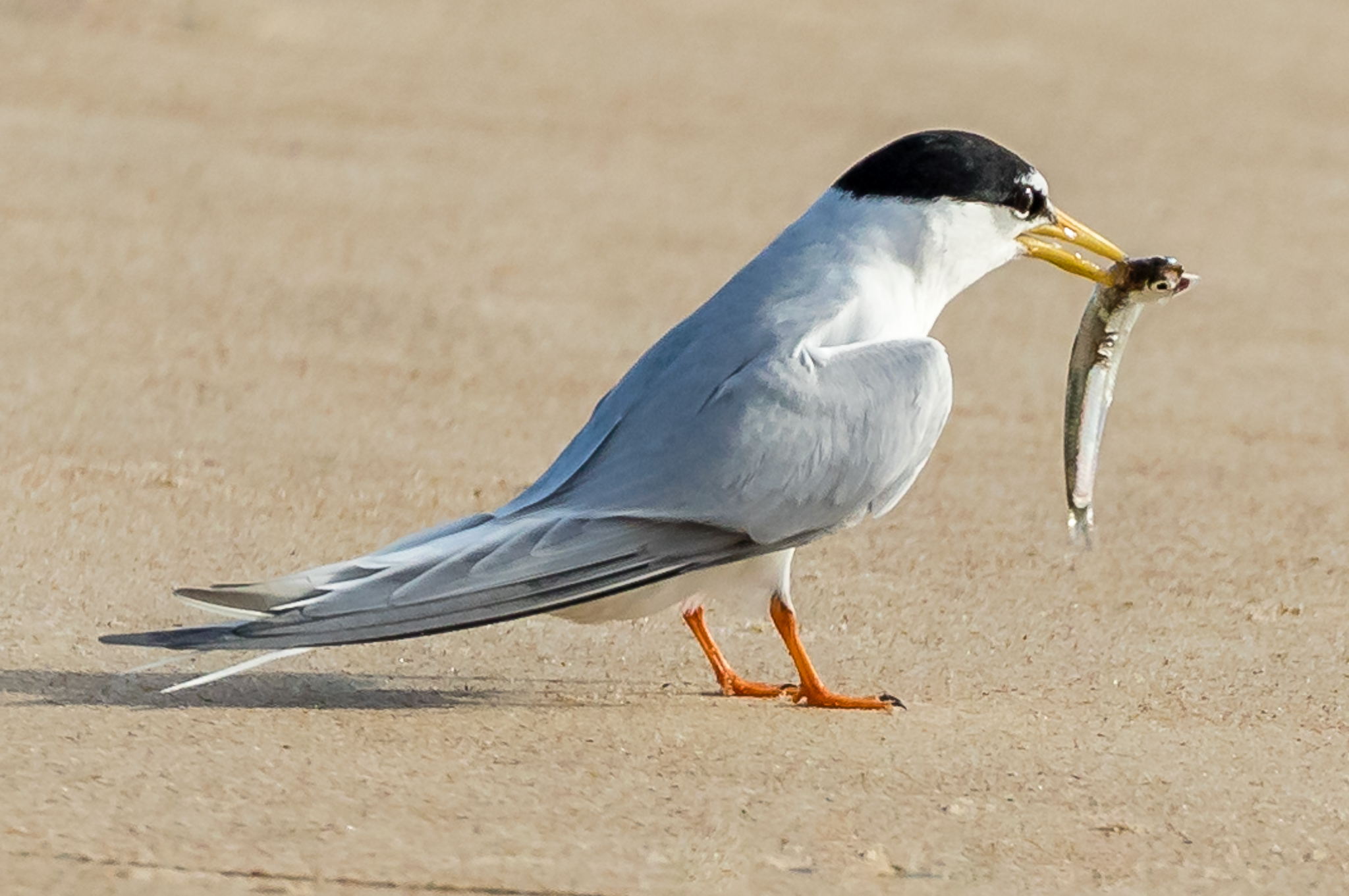At the Beach
At the Beach human development puts stress on the spaces shore birds have to live and breed. Their lives are threatened by people, dogs and vehicles. The thousands of migrant birds that make the journey from the northern hemisphere each year are endangered by development of the mudflats and swamps they rely on for food; both in Australia and in Asia.
Picture: This Little Tern has made a fine catch to share with its partner on their beach-side nest. Little Terns live and breed along Australia’s eastern, south-east and northern coastlines.
The Silver Gull, the most common Australian gull, is a familiar scavenger looking for food scraps at most beaches and around the city too.
Between sea and dunes small birds like this Red-capped Plover dodge beach goers to feed at waters edge. Red-capped are the most common of the plovers and seen on most Australian sandy beaches.
Pied Oystercatchers live up to their name eating shellfish and oysters. They probe in the mud with with their long bills for food. Numbers have been decreasing on NSW beaches.
Pelicans are seen at the beaches, lagoons and estuaries and sometimes on ponds and lakes a long way inland. They feed by scooping fish with their oversize bills.
This Crested Tern is returning with its catch of a small fish to a seaside lagoon, settling on an exposed sandbar for a quiet meal.
White-faced Herons freeze watching for movement on this rocky platform, then lunge to catch their prey. They eat fish, crustaceans, and also lizards and frogs.
This beach in Broome at the north of Western Australia is the arrival place for thousands of shorebirds returning from their North Asian and Alaskan breeding grounds.
The Bar-tailed Godwit has the record for the longest non-stop flight of any bird; 11,000 km from Alaska to New Zealand in eight days. “Australia’s” Godwits nest in Scandinavia, North Asia and Alaska!
The critically endangered Eastern Curlew migrates from Russia each summer. Numbers of these birds are decreasing rapidly as the Asian stop-over and refuelling mudflats are reclaimed and then developed.
White-bellied Sea-Eagles are often seen perching in high trees by the beach before soaring effortlessly high above the water. They are found around Australia’s coast but also on inland waterways and lakes.
This Hooded Plover, with his name tag, is one of 50 survivors still left on NSW beaches. Hooded Plovers nest precariously between the sandhills and high-water mark, often on popular surf beaches.
As the tide goes out on this South Coast New South Wales beach, two Sooty Oystercatchers arrive searching for food.
Pied Cormorants are seen at beaches and lagoons as well as inland ponds and lakes. They feeds on fish, crustaceans and molluscs.
These Crested Terns are restless as a storm approaches the beach, wheeling in the strengthening winds.
The Australasian Gannet is seen along Australia’s eastern and southern coastline. They are usually seen hundreds of metres offshore, flying then diving vertically to catch fish.
Further offshore the ocean birds (Pelagics) can sometimes be seen. If you are lucky you might see an Albatross like this Shy Albatross. Albatrosses are the masters of flight , some may circle the globe as they search for food.
Link to “Sydney Pelagic Birds”
















